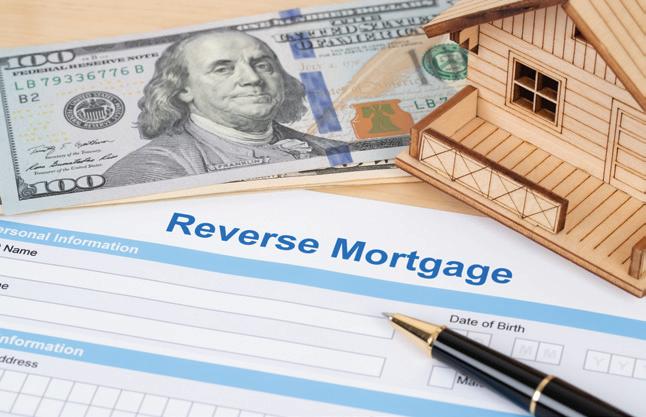
2 minute read
A Reverse Mortgage Could Be Just What You Need
While a reverse mortgage is not for everyone, in the right situation a reverse mortgage may be perfect for you. As life expectancy increases across the country, many retirees are finding their investment nest egg is insufficient to meet their long term needs. A customized reverse mortgage may be an excellent way to insure you will be capable of providing for yourself in retirement, without needing to sell off assets. To qualify for a reverse mortgage, borrowers must own their home, be 62 years old or older and meet some basic income requirements.
The only out-of-pocket costs to set up a reverse mortgage are loan origination fees, mortgage insurance premiums and customary mortgage settlement fees. These fees are required and regulated by the federal government.
Over the years, there have been many misconceptions about the details of how this federally regulated program works, the biggest is that the bank assumes ownership of your home in a reverse mortgage. This is not the case. Just like a traditional mortgage, the lender places a lien on your home to make sure the loan is repaid. Another common misconception is that a borrowers’ estate or children will be responsible for repaying the reverse mortgage. A reverse mortgage loan can only be repaid out of the proceeds from the sale of the home.
There are several ways a reverse mortgage can provide you with tax-free extra cash with no monthly payments required until the house is sold; a lump sum payout, a growing line of credit for life, monthly cash payments or any combination of the three.
With the lump sum payment, you can pay off an existing mortgage on your home to eliminate monthly mortgage payments. With the line of credit, you gain a credit limit that grows over time. If you choose the monthly cash payments option, you’ll receive a lifetime tax-free income stream.
The repayment of a reverse mortgage occurs when one of the following happens:

• The death of all borrowers including a qualified, non-borrowing spouse on the loan
• The sale of the property
• When the property is no longer the primary residence of at least one borrower for a period greater than 12 months
• If the property falls into disrepair and the borrowers are unable or unwilling to make repairs
• If the borrowers fail to pay property taxes and insurance costs
When any of the above happen, the home owners or executor of the owner’s estate has six months, plus two 3 month extensions to sell the property. The outstanding balance of the reverse mortgage loan and its accrued interest are paid from the sale proceeds. If they exceed the proceeds, the borrowers, their estate and their heirs are not liable for the shortfall. The shortfall is paid to the lender by a federal insurance program, meaning the borrower’s other assets remain untouched. N S
by Robert L. D’Anjolell, Jr., F.D. DANJOLELL Memorial Homes










